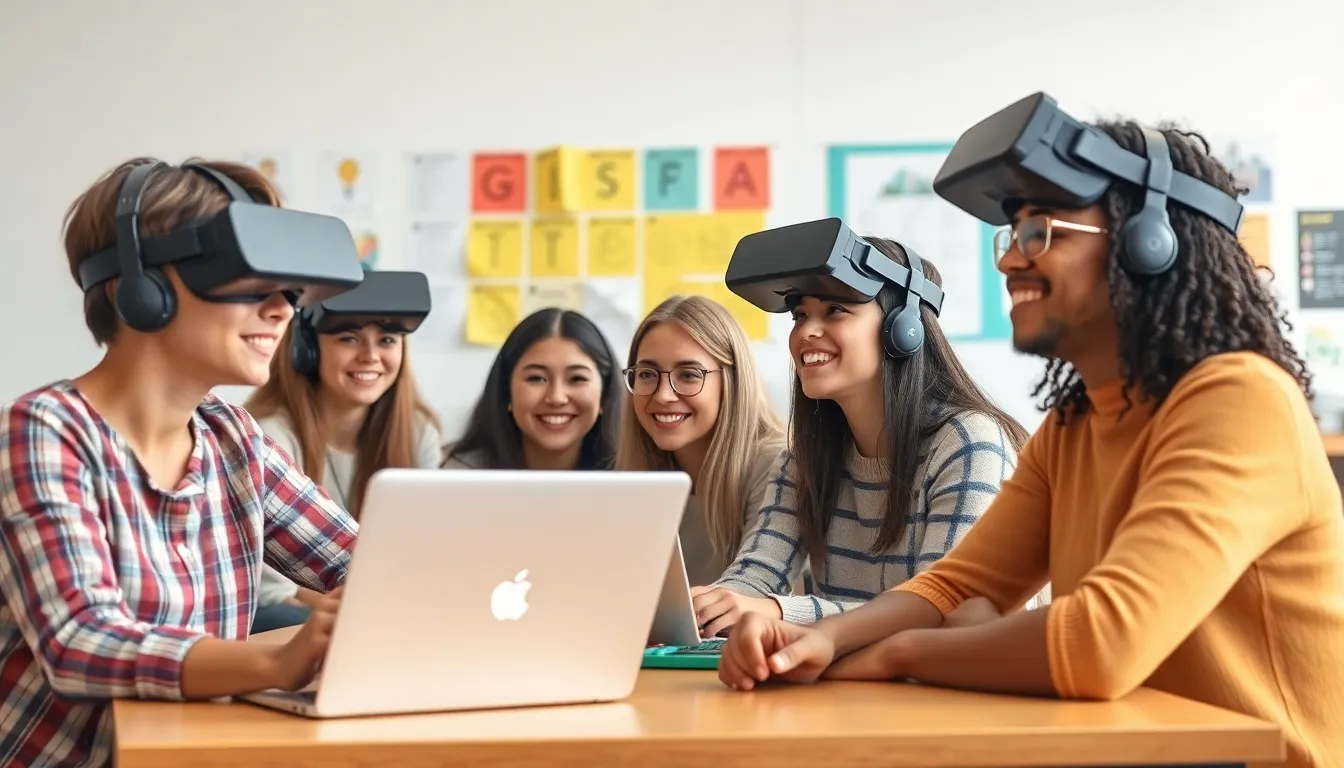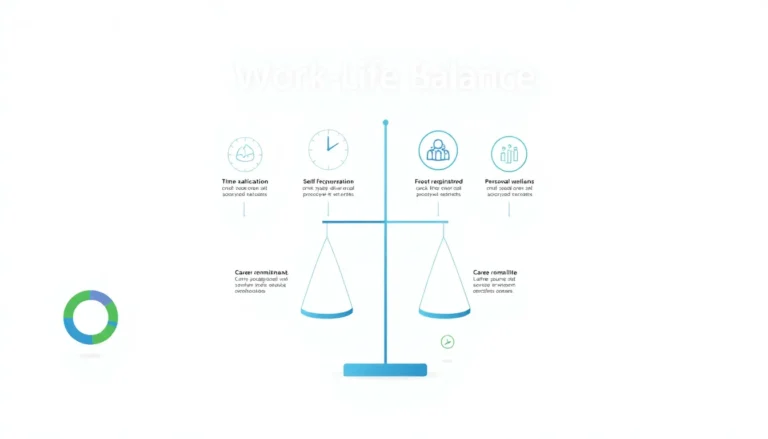Table of Contents
ToggleIn a world where language barriers can feel like towering walls, computer-assisted language learning (CALL) swoops in like a superhero ready to save the day. Gone are the days of dry textbooks and monotonous drills. With CALL, learning a new language becomes an adventure packed with interactive tools and engaging experiences. It’s like having a personal language coach who’s always on call—minus the awkward small talk.
Imagine mastering French while simultaneously dodging virtual baguettes or practicing Spanish by chatting with a friendly chatbot. CALL transforms the often daunting task of language learning into a fun and dynamic journey. So whether you’re aiming to impress at your next international dinner party or just trying to order a croissant without sounding like a confused tourist, computer-assisted language learning might just be your new best friend.
Overview of Computer Assisted Language Learning
Computer-assisted language learning (CALL) integrates technology into the language acquisition process. This approach employs various digital tools, enhancing the educational experience through interactive and personalized methods. Software programs, mobile applications, and online platforms facilitate language practice. These resources often include games, quizzes, and simulations, keeping learners engaged.
CONVERSATIONAL AI plays a key role in CALL. Digital assistants can converse with learners, providing instant feedback on pronunciation and grammar. Chatbots offer opportunities for real-time dialogue, allowing for practical language use. Learners may find scenarios where they practice conversational skills in a low-pressure environment.
Interactive elements in CALL also promote autonomy. Learners can tailor their educational experiences to match personal interests and pacing. As a result, individuals often feel more motivated to continue their studies. Progress tracking features allow learners to see their development, reinforcing goal attainment.
CALL also benefits educators. Language teachers gain access to a wealth of resources that supplement traditional instruction. They can monitor student performance and adapt lessons based on individual needs. Additionally, CALL creates opportunities for collaborative learning, facilitating group projects and study sessions online.
Evidence supports the efficacy of CALL in improving language proficiency. Research indicates that students using technology regularly demonstrate higher retention rates. Engaging with multimedia content enhances comprehension and vocabulary acquisition.
Overall, CALL represents a significant shift in language education. By harnessing technology, learners experience a dynamic and flexible approach, allowing them to navigate language learning challenges effectively.
Key Features of Computer Assisted Language Learning

Computer-assisted language learning (CALL) boasts several key features that enhance the language acquisition experience. These components engage learners and improve outcomes significantly.
Interactive Learning Environments
Engaging activities form the backbone of interactive learning environments in CALL. Digital tools create simulations and role-playing scenarios, immersing learners in realistic contexts. Gamified elements, such as point systems and leaderboards, motivate participation and foster competition. Real-time feedback from quizzes and exercises helps students identify areas for improvement immediately. Virtual reality applications enable immersion in new cultures, enhancing the learning process by integrating authentic language use. Collaborations via forums and chats with peers promote engagement and teamwork, making learning more social and effective.
Personalized Learning Paths
Tailoring education to individual needs is another crucial feature of CALL. Personalized learning paths empower learners to work at their own pace, accommodating varying learning styles. Adaptive software adjusts lesson difficulty based on performance, ensuring appropriate challenges. Learners can select topics of interest, keeping motivation high and learning relevant. Analytics track progress, providing insights for both students and educators about strengths and weaknesses. Flexibility allows for access to resources at any time, catering to busy schedules and promoting sustained engagement in language learning.
Benefits of Computer Assisted Language Learning
Computer-assisted language learning (CALL) offers various advantages that enhance the language learning experience. This modern approach transforms traditional methods, making language learning more engaging and effective.
Enhanced Engagement and Motivation
Interactive tools captivate learners, making language acquisition enjoyable. Gamified elements provide incentives, encouraging persistent practice. Engaging activities stimulate curiosity and foster exploration of new languages. Rewards and progression tracking motivate individuals to reach their learning goals. Integration of multimedia resources, such as videos and games, caters to diverse learning styles, enhancing overall retention. Personalization of content ensures that learners remain invested in their studies. Real-time feedback builds confidence, allowing them to see immediate results and adjust their efforts.
Accessibility and Flexibility
Digital platforms offer unparalleled accessibility, enabling learners to study anytime and anywhere. Users can choose materials that suit their interests and proficiency levels, ensuring a tailored experience. Mobile learning applications allow learners to practice on the go, integrating language study into daily routines. Flexibility in pacing permits individuals to advance based on personal progress, significantly boosting self-directed learning. Many platforms provide resources across different devices, allowing seamless transitions between smartphones, tablets, and computers. This adaptability supports a wide range of learners, ensuring everyone has the tools they need to succeed.
Challenges in Computer Assisted Language Learning
Challenges in computer-assisted language learning (CALL) can inhibit effective language acquisition. Technological and pedagogical barriers often pose significant obstacles to learners.
Technological Barriers
Access to reliable technology frequently affects learners’ experiences. Not everyone has high-speed internet or modern devices, creating disparities. Software compatibility issues may arise between different platforms or devices, complicating the learning process. Learners might face technical difficulties while navigating unfamiliar interfaces. Additionally, a lack of digital literacy can hinder engagement, especially for those new to technology. These challenges can disrupt the flow of language practice, detracting from the effectiveness of CALL.
Pedagogical Considerations
Instructors must carefully evaluate their teaching strategies when integrating CALL. Adopting a one-size-fits-all approach can overlook diverse learning needs. Some learners might struggle with pacing, while others rush through content, leading to gaps in understanding. Moreover, inadequate training for educators on the use of digital tools can limit the effectiveness of CALL. Aligning technology with educational goals ensures optimal use of resources. Continuous assessment of learner progress is essential for successful language acquisition and adapting methods as necessary.
Future Trends in Computer Assisted Language Learning
Advancements in artificial intelligence are shaping the future of computer-assisted language learning (CALL). Adaptive learning technologies personalize language acquisition by adjusting difficulty levels based on user performance. Gamification strategies will become more prevalent, creating immersive and enjoyable experiences that further engage users.
Virtual reality applications are set to revolutionize how learners interact with new languages. By simulating real-world environments, these applications provide authentic contexts for practice. Increased usage of conversational agents will enhance interaction, as learners benefit from instant feedback during dialogue.
Data analytics continues to play a significant role in improving CALL. Teachers can access insights into learner progress, identifying strengths and weaknesses while adjusting methods accordingly. Integration with social media platforms is also emerging, allowing language learners to connect and practice their skills in a community setting.
Mobile learning will remain a focal point as more learners seek flexibility in their studies. Accessibility to language resources through smartphones and tablets facilitates on-the-go practice. Additionally, the integration of voice recognition technology enhances pronunciation feedback, directing learners towards improved speaking skills.
The future of CALL centers on inclusivity and accessibility. Developers will prioritize creating resources that accommodate diverse learning styles and needs. Continuous professional development for educators will ensure that teaching strategies remain effective amid evolving technologies.
Collaborative tools are expected to enhance group learning experiences, prompting students to work together on language tasks. Blended learning models will gain traction, combining face-to-face instruction with online resources for a comprehensive approach. This multifaceted strategy supports varied learning preferences and promotes a rich educational experience.
Computer-assisted language learning is reshaping the way individuals approach language acquisition. By integrating technology into the learning process, it fosters engagement and motivation through interactive tools and personalized experiences. As learners navigate their educational journeys at their own pace, they benefit from instant feedback and immersive environments that enhance understanding.
While challenges exist, such as access to technology and the need for effective teaching strategies, the potential for CALL to transform language education is undeniable. Future advancements in artificial intelligence and gamification promise to create even more engaging and effective learning experiences. As educators adapt to these changes, the focus on inclusivity and accessibility will ensure that all learners have the opportunity to succeed in their language learning endeavors.







